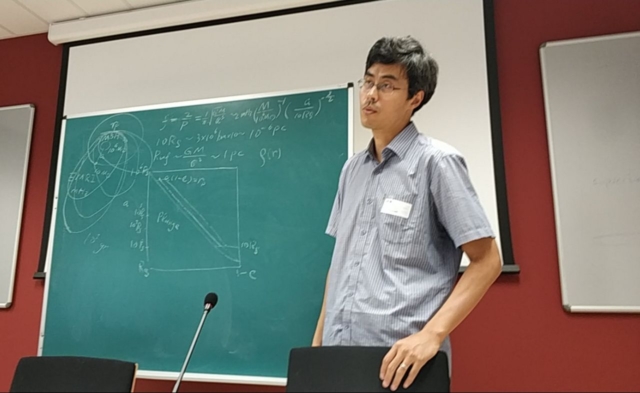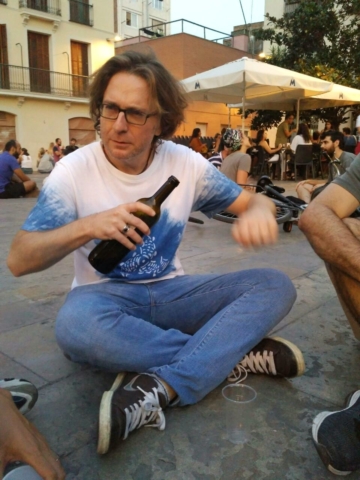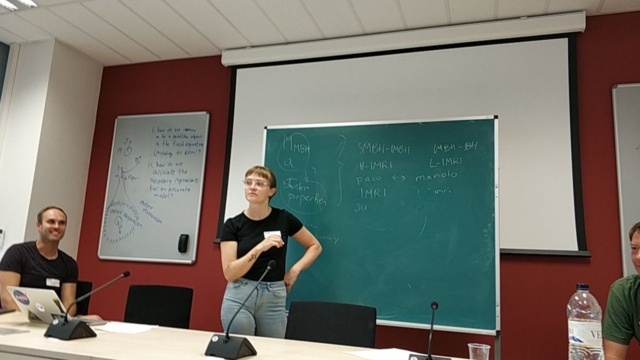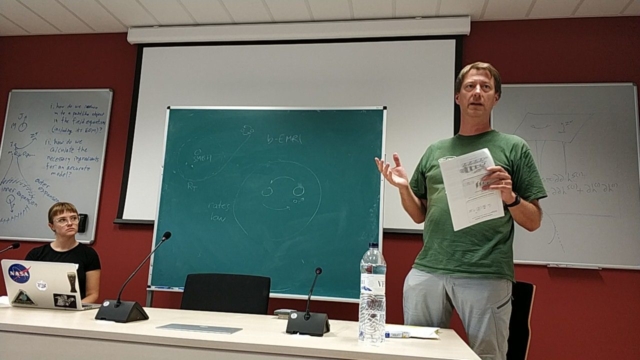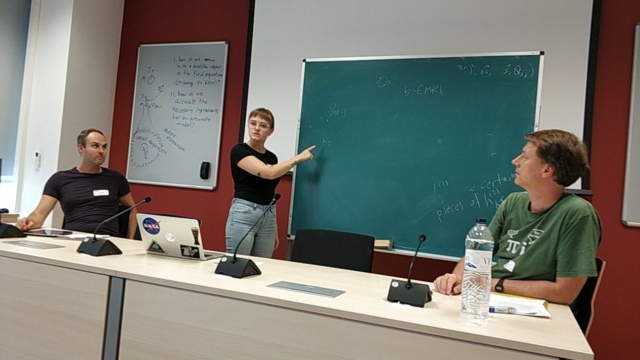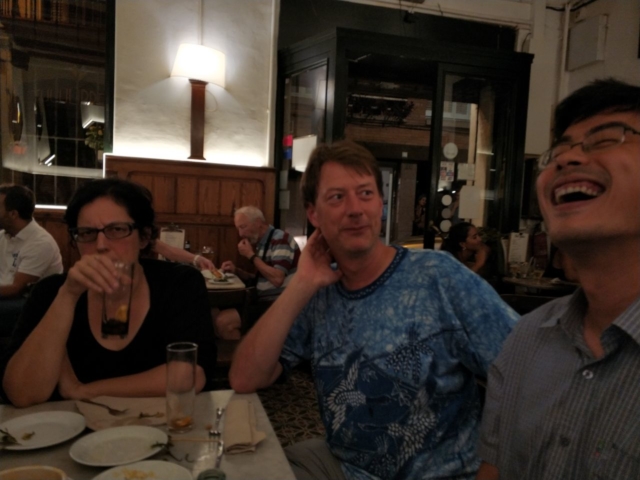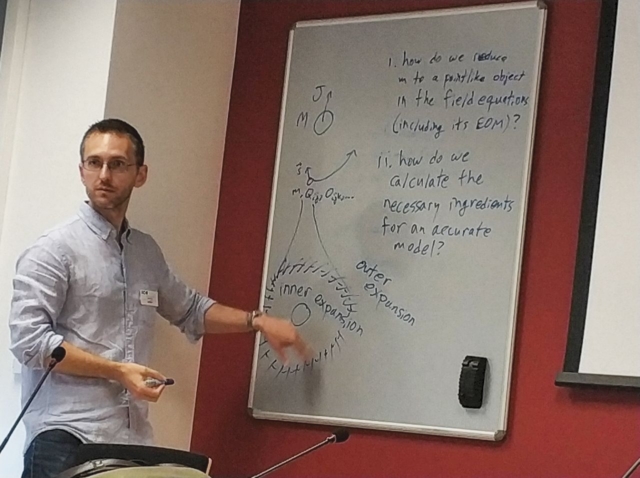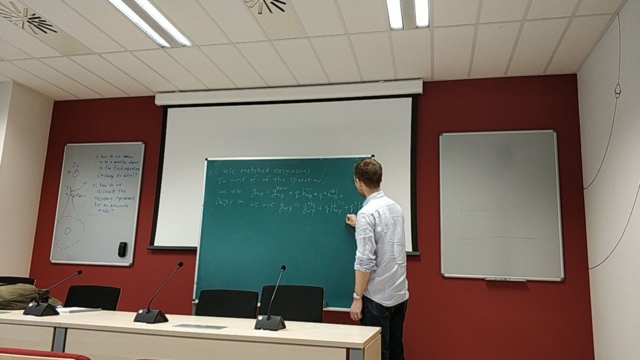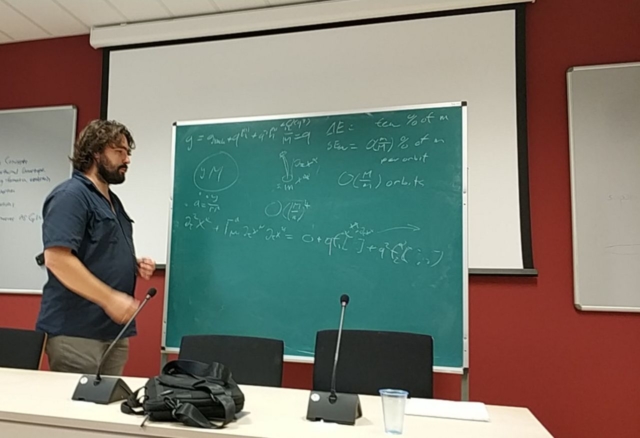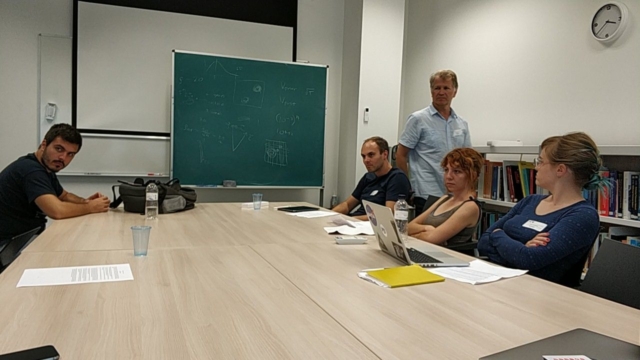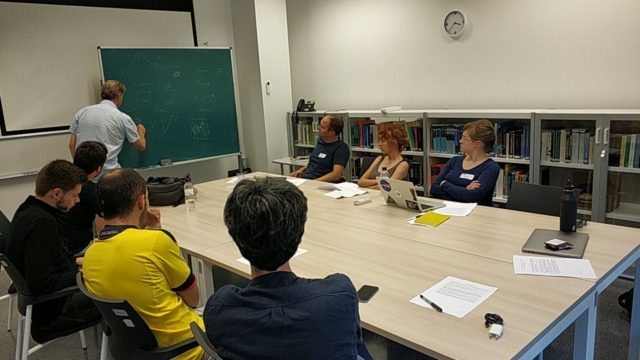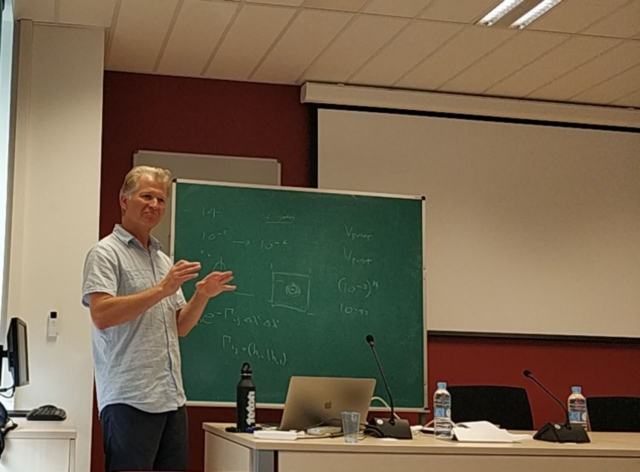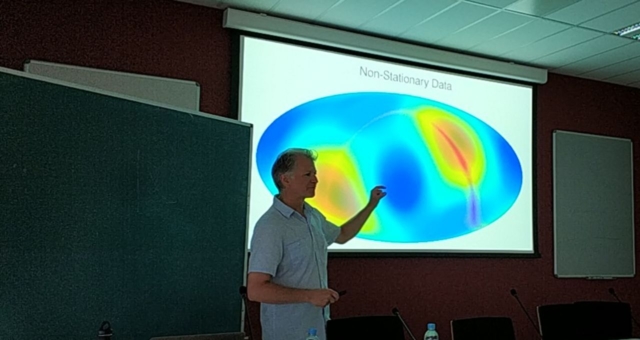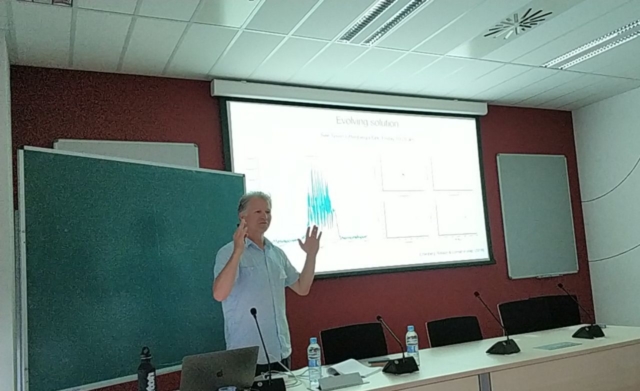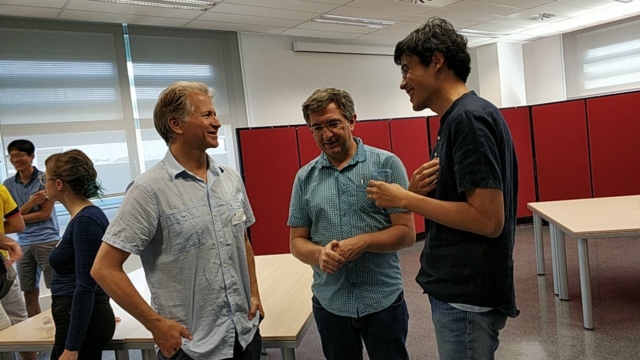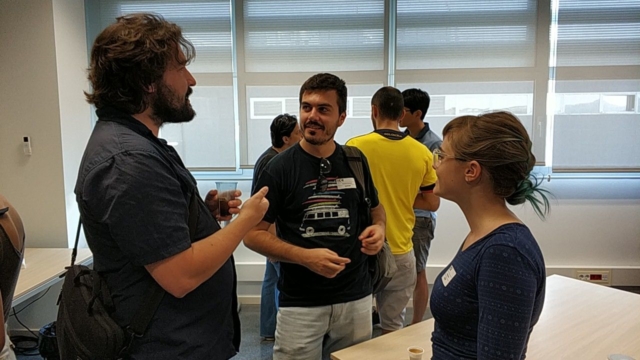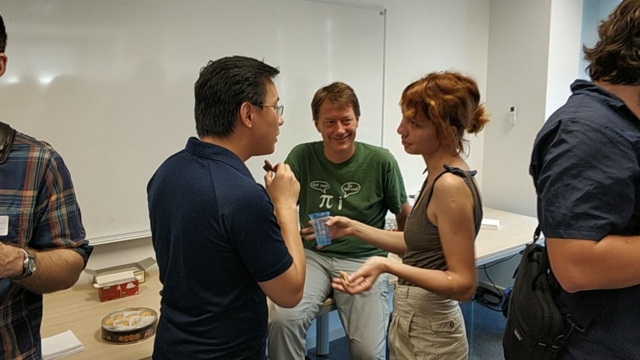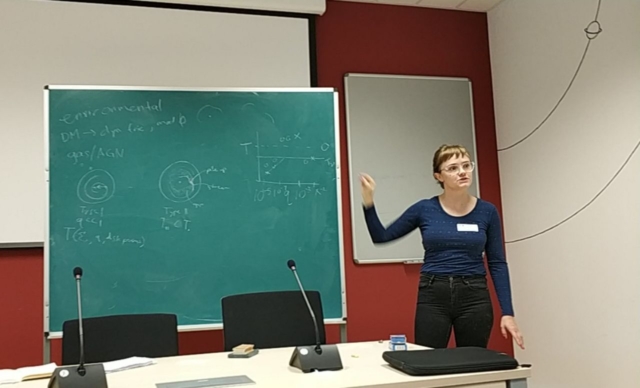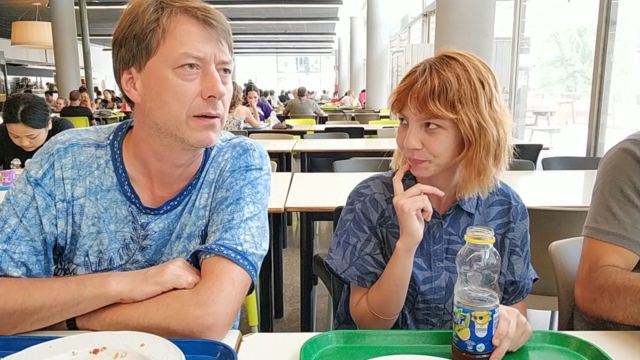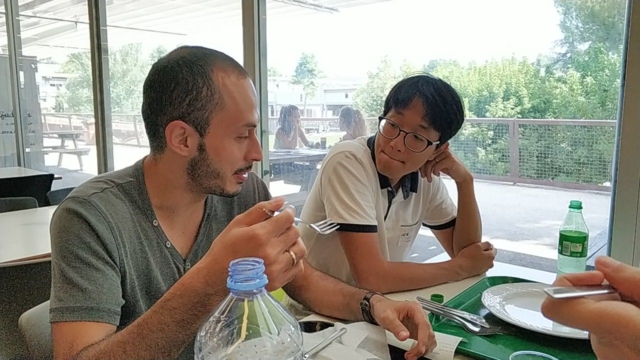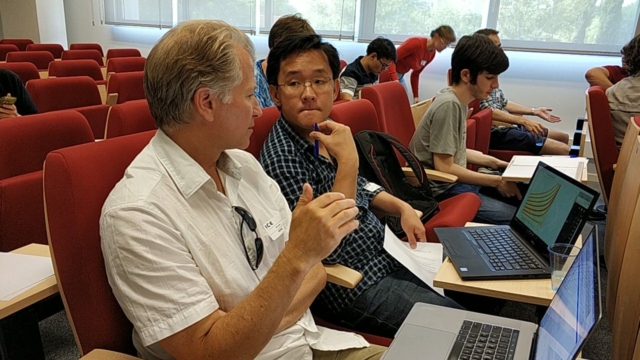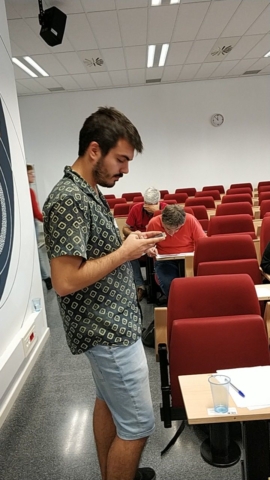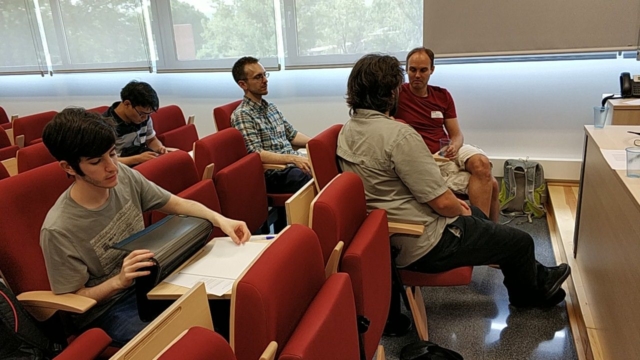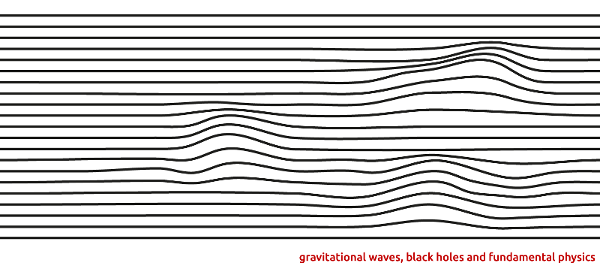The First Tal Alexander Meeting on Extreme (and Intermediate-) Mass Ratio Inspirals
Tal Alexander has been one of the best scientists on the field, and his contribution beyond description. Without his science, we would not have made it so far in the problem of extreme-mass ratio inspirals and stellar dynamics in general. Besides being a great scientist, he was a cultivated, intelligent, receptive human being in the full meaning of these two words, and one of my best friends. From now, all Astro-GR meetings focusing on EMRIs will be named after Tal to honour him. Because I want to do it, and because he deserves it.
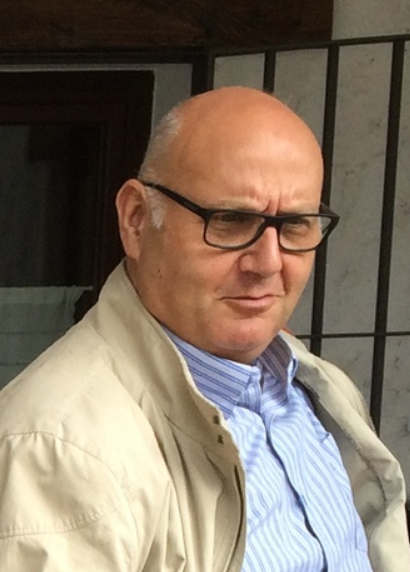
TOPIC
ASTROPHYSICS, GENERAL RELATIVITY, AND FUNDAMENTAL PHYSICS
from the capture of compact objects by massive black holes.
Organised by Pau Amaro-Seoane and Carlos F. Sopuerta in Barcelona, at the ICE (CSIC-IEEC) from Tue 4 – Thu 6 September 2018.
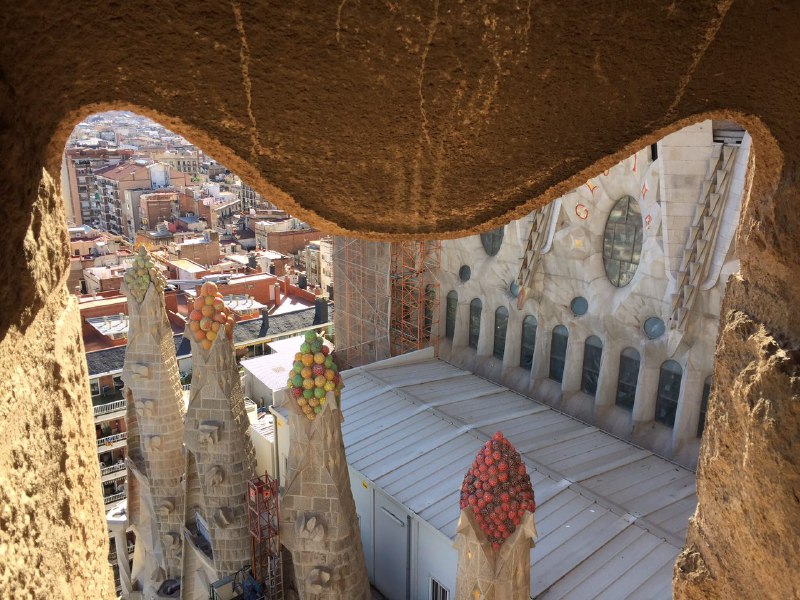
Copyright Alejandra Lezcano
DESCRIPTION
The Laser Interferometer Space Antenna (LISA) is the future ESA-NASA Gravitational Wave Observatory. It will look for GW signals in the low-frequency band (0.1 mHz – 1 Hz), mainly from the following sources: galactic binaries, the coalescence and merger of massive black holes in galaxies at cosmological distances, the capture and inspiral of stellar compact objects into massive black holes at galactic centers and even from cosmological stochastic backgrounds.
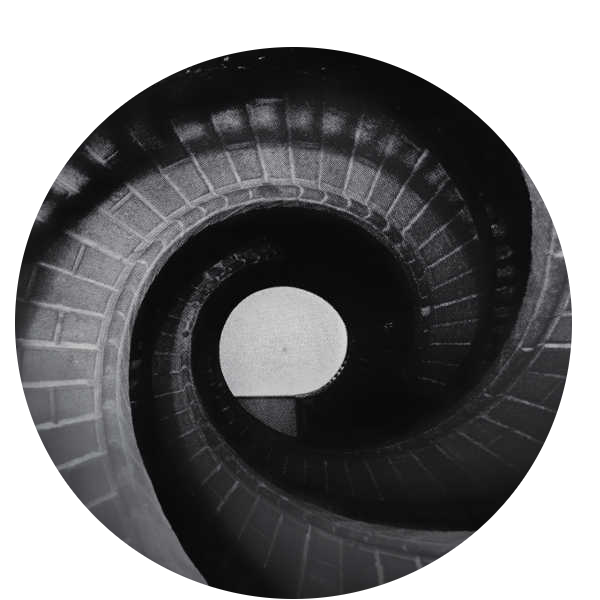
These observations promise to open a completely new window to the exploration of the Universe, which is expected will have important consequences for our knowledge in astrophysics, cosmology, and fundamental physics. This edition of the Astro-GR meetings will focus again (like the first meeting in the series) on the third source above, (iii), which due to the mass ratio of these binaries they are commonly known as Extreme-Mass-Ratio Inspirals (EMRIs). Considering the possible existence of intermediate-mass black holes, an additional source of gravitational waves for LISA will the inspiral of stellar-mass compact objects into an IMBH or the inspiral of an IMBH into a MBH. These sources, again due to the mass ratio of the binaries, are known as an intermediate-mass ratio inspirals (IMRIs).

Copyright Alejandra Lezcano
AIMS
We will have short presentations from the participants and everything will be run in a very informal way. The main goal is to discuss the science but also the strategy to follow in the next year(s) related to all aspects of EMRIs. The discussions will be connected to the work by the Data Analysis Group, in particular to waveform modelling, detection and parameter estimation, multi-band GW analysis and the analysis of I/EMRI populations.
PARTICIPANTS
Pau Amaro Seoane, Pedro Capelo, Xian Chen, Alvin Chua, Neil Cornish, Andrea Derdzinski, Carlos F. Sopuerta, Marc Freitag, Angela Gardini, Jongsuk Hong, Kostas Kokkotas, Niels Warburton, Marius Oltean, Adam Pound, Alejandro Torres Orjuela, Selin Üstündağ, Maarten van de Meent, Stamatis Vretinaris, Feng Xuefeng
GETTING TO THE INSTITUTE
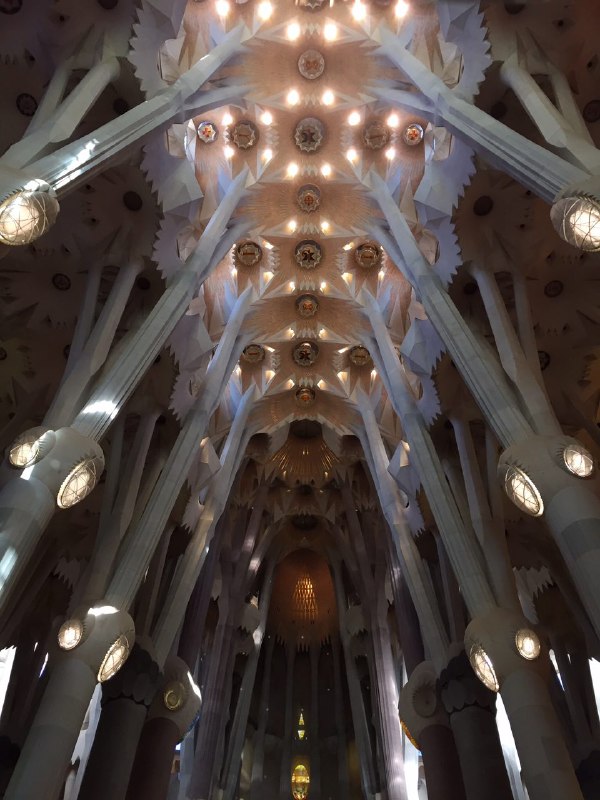
Copyright Alejandra Lezcano
PICS
We acknowledge support from COST (European Cooperation in Science and Technology) Action CA16104 GWverse.
